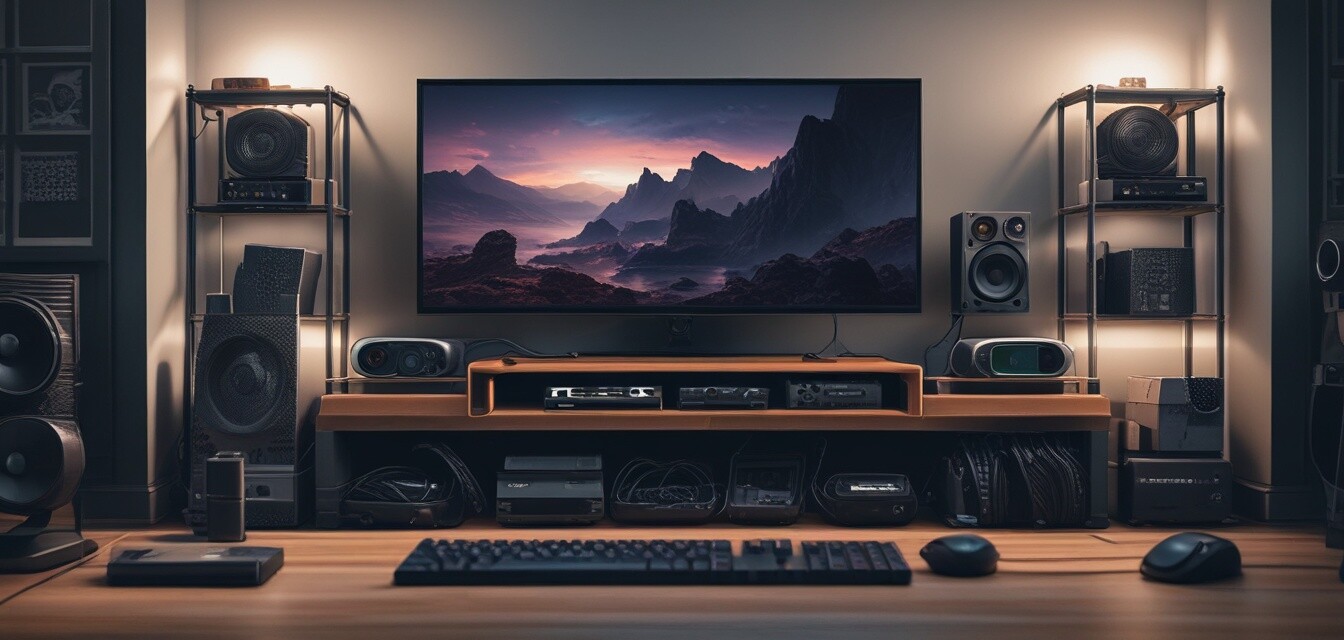
Best Practices for Gaming Cable Management
Key Takeaways
- Effective cable management improves the aesthetics of your gaming setup.
- Using cable ties and sleeves can keep cords organized and prevent damage.
- Consider the layout of your space to find optimal cable routing solutions.
- Regularly check and maintain your cables to avoid tangling and wear.
- Invest in storage solutions to enhance overall organization.
In the world of gaming, a clean and organized setup can significantly enhance your experience. Cable management might seem like a minor detail, but when done right, it can make a huge difference. This guide outlines effective strategies and product recommendations for managing your gaming cables effectively.
Why is Cable Management Important?
Effective cable management not only offers a cleaner look to your gaming area but also promotes safety and accessibility. Here are some reasons why you should prioritize cable management:
- Prevents tangling and damage to cables.
- Reduces the risk of tripping hazards.
- Enhances airflow around gaming equipment to prevent overheating.
- Makes it easier to identify and troubleshoot issues with hardware.
Understanding Your Setup
Before implementing any cable management techniques, it is crucial to analyze your gaming setup. Consider the following elements:
- Type and number of devices: consoles, PCs, monitors, etc.
- Available space and layout of the gaming area.
- Accessibility of power outlets and sockets.
- Possible areas for hidden cable runs.
Best Practices for Effective Cable Management
1. Use Cable Ties and Velcro Straps
Cable ties and Velcro straps are great for bundling multiple cables together. They help minimize clutter and make it easier to keep cables organized. Consider the following:
| Type | Usage | Pros | Cons |
|---|---|---|---|
| Cable Ties | Securing cables in tight bundles | Affordable and widely available | Can be difficult to re-use |
| Velcro Straps | Adjustable bundling | Reusable and adjustable | May cost more than plastic ties |
2. Cable Sleeves for Protection
Investing in cable sleeves can protect your cables from wear and tear while offering a sleeker appearance. These sleeves come in various materials, such as:
- Neoprene: Durable and flexible.
- Fabric: Soft and easy to handle.
- Heat-shrink tubing: Provides insulation and protection.
3. Plan Your Cable Routes
Mapping out your cable routes can significantly improve organization. Here are tips to consider:
- Run cables along walls or the back of furniture to conceal them.
- Make use of under-desk cable trays to keep things tidy.
- Consider using adhesive cable clips to secure cables in place.
4. Label Your Cables
Labeling cables can save you time and frustration during equipment setups or troubleshooting. Use a label maker or write directly on strips with permanent markers. Organize them by:
- Device type (monitor, console, etc.)
- Functions (power, HDMI, data)
- Location (back of the desk, behind the TV)
5. Regular Maintenance
Finally, regular checks will keep your cable system in shape. Make it a habit to:
- Inspect cables for wear and tear.
- Reorganize cables as necessary based on equipment additions or changes.
- Dust off connectors to prevent connectivity issues.
Common Cable Management Products to Consider
Implementing the best practices for cable management can be enhanced with the right products. Here’s a list of items that can help in creating an organized gaming setup:
| Product | Features | Best For |
|---|---|---|
| Cable Management Box | Hides power strips and excess cords | General organization |
| Under-Desk Cable Tray | Supports multiple cables under the desk | Desks with limited space |
| Cable Clips | Adhesive clips to hold cables in place | Organizing visible cables |
| Velcro Cable Wraps | Reversible and adjustable wraps for cables | Freedom for frequent adjustments |
Conclusion
Implementing effective cable management strategies is essential for any gamer looking to elevate their gaming experience. Not only does it enhance the aesthetics of your setup, but it also contributes to better functionality and durability of your equipment. By following the practices highlighted in this guide and investing in quality cable management products, you can create a tidy, organized space for your gaming needs.
Tips for Beginners
- Start small: Focus on one area of your setup at a time.
- Keep tools handy: Use scissors, labels, and zip ties during setup.
- Plan ahead: Consider how you'll rearrange or expand your setup in the future.
Pros
- Improved appearance of your gaming space.
- Reduced wear on cables, prolonging their life.
- Enhanced safety in a clutter-free environment.
Cons
- Initial time investment to organize.
- Potential need to purchase additional products.
For more tips on improving your gaming setup, check out our articles on game storage and organization and buying guides for gaming accessories.